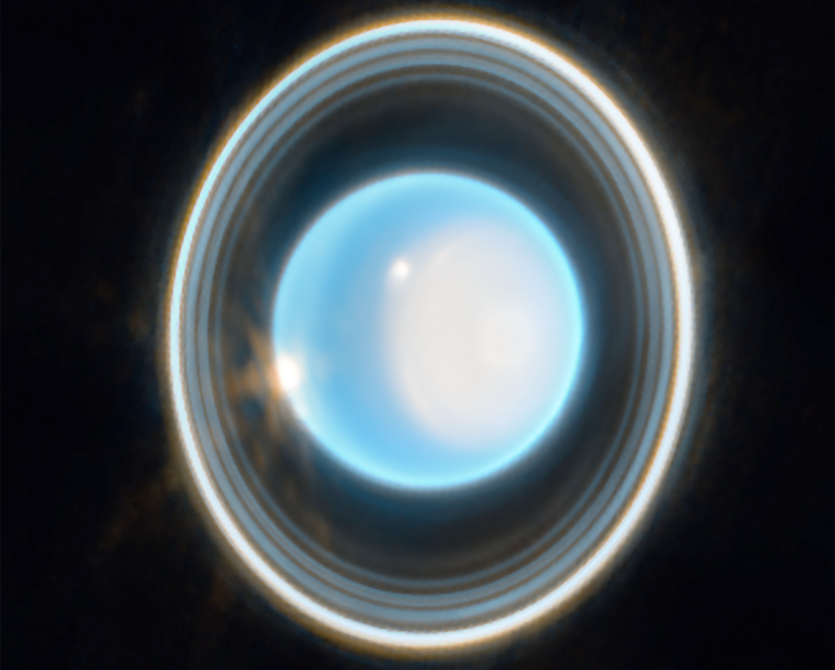
Astronomers from the University of Houston in the United States have found, that Uranus radiates its own internal heat in greater quantities than it receives from the Sun, which contradicts the observations of NASA’s Voyager 2 mission.
Researchers led by Xinhua Wang analyzed the data, received over the decades from spacecraft and computer models. They found that Uranus radiates 12.5% more heat than it receives from the Sun.
This is still significantly less than planets such as Jupiter, Saturn, and Neptune, which radiate 100% more heat than they receive from the Sun. According to the researchers, the nature of Uranus’s internal heat may help reveal the secret of origin of this distant, mysterious world.
«This means that it is still slowly losing the heat left over from its early history, which is a key piece of the puzzle that helps us understand its origins and how it has changed over time», — emphasizes Xinyue Wang.
In 1986 Voyager 2 flew near Uranus, heading outside the Solar System. Much of the information that scientists have about this planet was obtained as a result of this mission. At that time, the results showed that Uranus does not emit a significant amount of heat.
However, as it turned out, it is possible Voyager 2 flew close to Uranus during a special period, and the data collected by the spacecraft could have been distorted by a surge in solar activity. Based on the analysis of archival data and computer models, scientists have concluded that the internal heat emitted by Uranus may indicate a completely different internal structure of the planet.
It is believed, that Uranus was formed about 4.5 billion years ago along with the rest of the solar system. According to NASA, Uranus was initially much closer to the Sun, and then moved away after about 500 million years. However, new data casts doubt on this assumption.
In 2022 National Academy of Sciences has designated the concept of a mission, conventionally known as the «Orbiter and Uranus Probe», as one of the highest priorities for the next decade. However, even before the US President Donald Trump’s administration cut funding for NASA’s space programs, scientists understood that this was a complex mission.
«We face many obstacles ahead – political, financial, technical – so we have no illusions. We have about ten years to go from a paper mission to equipment in the fairing. There is no time to waste», — said the planetary scientist from the University of Leicester in the UK Lee Fletcher.
The results of the study are published in the journal Geophysical Research Letters
Source: LiveScience

Spelling error report
The following text will be sent to our editors: